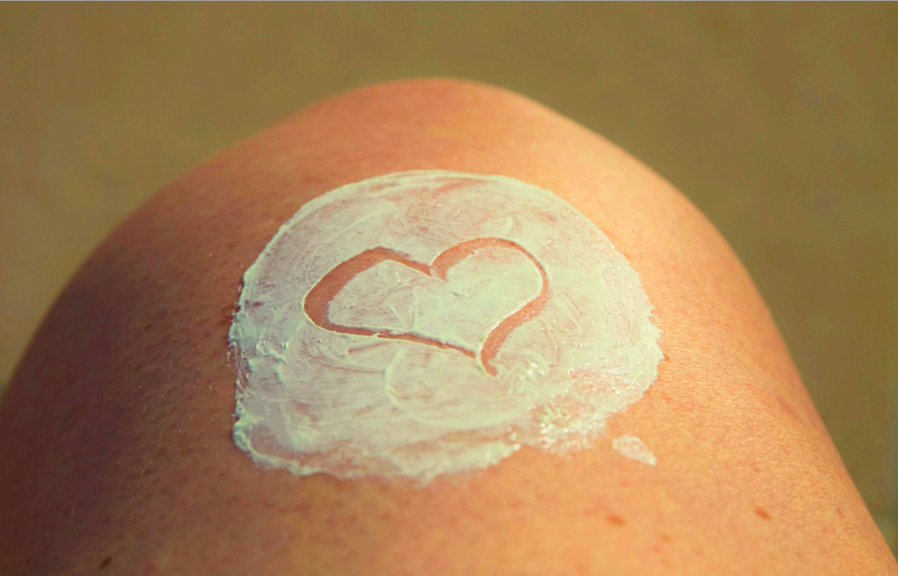The sun is essential for life. It is a source of energy, light and heat. It not only regulates ocean currents and the hydrological cycle, but also emits energy in the form of radiation, through electromagnetic waves.
There are three types of ultraviolet radiation: UV-C, UV-B and UV-A. Due to its large amount of energy, UV-C radiation is the most harmful, but it does not reach the Earth’s surface. UV-B crosses the ozone layer and causes skin damage and UV-A has the longest wavelength, so it reaches the Earth in greater proportion. These last two types of radiation cause the famous tanned skin.
The characteristic caramel tones of tanned skin, which many of us aspire to during the summer, are produced when the body tries to protect itself from ultraviolet rays and begins to produce more melanin: a pigment that gives color to the skin and causes its temporary darkening.
For people with lighter skin tones, the skin often turns red after sun exposure. This occurs as an inflammatory response in the body, which is caused by the dilation of blood vessels and causes damage to skin cells.
If various species are exposed to the sun all day and their skin is not affected, why do human beings suffer visible consequences in these circumstances? Aren’t we the most evolved species? Fur, feathers and scales protect mammals, birds and reptiles, for example, although elephants and rhinoceroses not only have thicker skins, but also cover themselves in mud or dust in order to get protect from the sun.
Hippos produce reddish-colored sweat that is made up of two pigments that help absorb UV rays, while other animals simply seek out shady areas. Similarly, human beings often take refuge in shaded areas and in most cases, we are unaware that ultraviolet rays are capable of passing through windows, so being at home is not enough to protect against the sun.
Options, Differences and Decisions
The sun provides vitamin D to our bodies, which offers us benefits such as the possibility of having healthy bones and muscles. Also, it increases the release of serotonin and can help lower blood pressure. However, overexposure to sunlight is detrimental to the skin, eyes, and immune system.
This overexposure can cause vision disorders, premature aging of the skin, burns and cancer. This is why it is important to use the appropriate amount of sunscreen and apply it several times throughout the day, depending on the level of direct sun exposure.
There are two types of blockers: physical and chemical. Physical sunscreens have ingredients like zinc and titanium dioxide, while chemical sunscreens use salicylate, benzoate, and oxybenzone. The difference between the two lies not only in several of their components, but also in the fact that the physical sunscreen reflects and scatters UV rays, while the chemical sunscreen absorbs them. In addition, some studies claim that titanium dioxide and oxybenzone cause damage to marine corals and other coastal organisms.
It’s not just about choosing between chemical or physical sunscreens, but also considering the sun protection factor (SPF). The minimum SPF to get should be 30. SPF 15 filters about 93% of UV rays, SPF 50 protects 98%, and SPF 100 protects 99%. The higher the SPF, the higher the level of protection, but as that factor approaches 100, the difference is smaller. In addition to this, the blockers must be broad-spectrum; that is, they must protect us against UV-A and UV-B rays.
It is common to assume that we should only use sunscreen on parts of the body that are uncovered or exposed to the sun. A linen shirt protects as little as SPF 5 sunscreen and a cotton shirt as SPF 40 cream. The level of protection offered by a garment depends on three factors: the weave of the fabric, the thickness of the thread and the dye.
When the skin becomes flaky, it means that sunlight has penetrated its deeper layers, which could lead to cancer. On the other hand, there is a myth that on cloudy days you should not use sunscreen, but 80% of UV rays pass through the clouds and produce a mirror effect that can affect our skin.
Despite the scientific articles that prove the effects of sunscreens and refer to the risk factors that we can suffer from exposing ourselves to the sun, only one in ten people uses sunscreen every day. The sun is life, we know that, but we often forget that it is also death.

